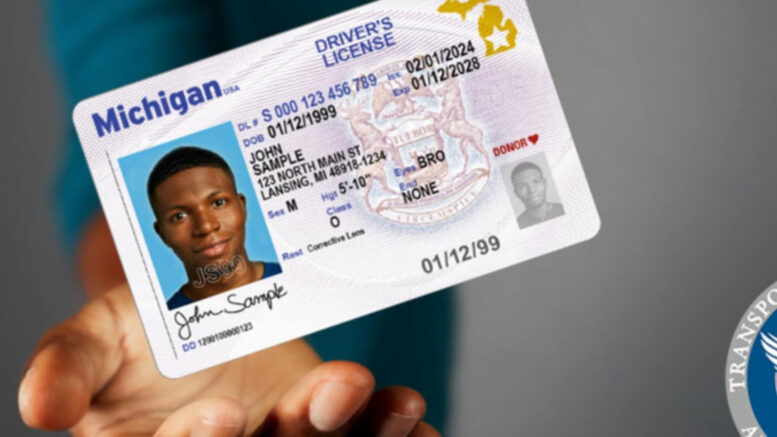The Real ID mandate kicks in May 7, 2025, forcing travelers to flash a beefed-up ID with a special star on the top corner of it for boarding domestic flights, visiting military bases or specific federal buildings, or entering nuclear power plants. Sprung from 9/11’s security wake-up call, it’s pitched as a fraud-buster by the Department of Homeland Security (DHS). Yet, whispers of government overreach and data leaks have privacy folks spitting nails. Is this ID your boarding pass to safety or a one-way ticket to surveillance city? Let’s slice through the noise—plus, we’ll cover what you need to snag one and how it might tie to fairer voting down the road.
Real ID’s Security Swagger
Real ID’s got big promises. It toughens IDs, making fakes harder for crooks or worse. The TSA says it’ll speed up airport checks—less waiting, more moving. DHS insists it closes 9/11-era loopholes, while airlines cheer smoother passenger flow. For supporters, it’s a trust-builder, ensuring only legit folks board planes. However, not everyone’s buying the hype, and the privacy cost raises eyebrows.
Real ID’s Privacy Pitfall
Here’s the deal: Real ID’s a data hog. It feeds a national database with your name, address, and more—prime hacker bait. The ACLU calls it a surveillance magnet, warning of government creep. States shell out billions to comply, and folks without easy access to documents like birth certificates—think low-income or rural—get stuck. Libertarians snarl at the control vibe. Thus, critics see it as a freedom tax dressed up as safety.
Who’s Driving Real ID?
The TSA’s the muscle, enforcing Real ID at airports. DHS sets the rules, nudging states into line. Congress cooked it up in 2005, spooked by 9/11’s ID flops. Travel groups like the U.S. Travel Association back it, craving clear rules for flyers. These players swear it’s a security slam-dunk. Meanwhile, they’re dodging flak from those who smell a federal power grab.
Who’s Fighting Real ID?
Plenty aren’t rolling over. The ACLU’s screaming about data breaches. Libertarian groups like Cato Institute call it government bloat. States like Montana once thumbed their noses with anti-Real ID laws. Everyday people fret too—some can’t afford the ID hustle, others hate the tracking vibe. Privacy buffs push biometrics as a lighter touch. For them, Real ID’s risks scream louder than its perks.
What You Need for a Real ID
Getting a Real ID’s no casual errand. You’ll need:
- Proof of Identity (one of these three):
- Social Security Number (SSN):
- Your Social Security card
- Visit SSA.gov if you need a replacement
- Examples: W-2 or a pay stub with your SSN
- Your Social Security card
- Proof of Address:
- Two (2) documents, showing your name and address
- Example: utility bill, bank statement or rental lease
- Written Signature:
- Something like a credit card, canceled check, or current driver’s license.
Head to your DMV with hard copies—digital won’t cut it. Appointments help, but walk-ins face waits, sometimes 15 minutes or more. It’s a paperwork slog, and for some, like the homeless or rural folks, tracking down these docs is a nightmare. Plan ahead; it takes 2-3 weeks for the ID to hit your mailbox, but some people have reported receiving theirs in the mail within a week.
Real ID and the SAVE Act Angle
Here’s a twist: Real ID might prep us for fairer voting. The SAVE Act, floating in Congress passing the House on April 10, 2025, wants proof of citizenship for federal elections by 2028. Real ID’s strict ID checks—verifying who you are with solid docs—could align with that push. By getting Americans used to hauling verified IDs now, it’s like a dress rehearsal for voting integrity later. Supporters say it’d block non-citizen votes, ensuring elections stay clean. Critics, though, warn it could box out legit voters who can’t get IDs. Either way, Real ID’s laying groundwork for that debate.
Final Rundown and Brain Jab
Real ID’s a split decision—safety win or privacy sting. TSA and airlines love its fraud-fighting flex, but the ACLU and libertarians cry foul over data risks. It’s a travel must-have, yet it screws some folks with document hurdles. Plus, it might tee up fairer voting via the SAVE Act by 2028. The fight’s about balancing secure systems with personal freedom.
So, what’s your take: does the safety juice justify the privacy squeeze?
Like this article?
☕️ Share a coffee: https://buymeacoffee.com/criordan
👉 Follow me on X: @CRiordan2024
Click HERE to read more from Clara Dorrian.






